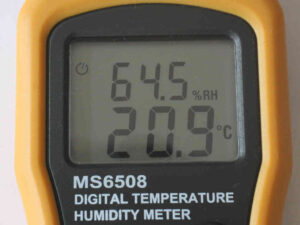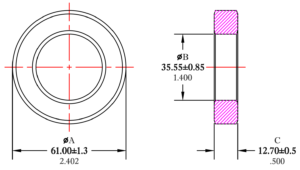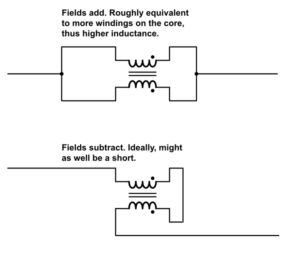One of the notions one often sees discussed is that at RF, some device inserted in a relatively long (meaning wrt wavelength) conducting path is likely to lead to interruption of the circuit in the way that a switch might in a DC circuit. Another variant is one where current flows on one side of the device and not the other… a fence
as explained in the following text by one poster.
With a current balun or CM choke, it is the reactance (inductance) that is mostly responsible for the balun action. In the case of the choke balun, beads installed along the coax at the feed with 31 or 43 material, they form a reflective ‘filter’. There is some absorption, but most of the action is due to reflection from the inductive reactance they form installed on a conductor. As such, they form a high-Z isolation point between the feeder and the antenna center, assuming they are installed at the feedpoint of the doublet. In the case of the CM choke, the common mode currents are reflected by the inductive reactance of the windings as with the current balun and the balance of current between the two conductors is forced through induced opposing magnetic currents within the cone. This is the reason I prefer the CM choke for the purpose. In either case, the common mode current is reflected to a large extent by the inductive reactance back where it originated. Installation of a balun at the feedpoint of a doublet does not make the CM currents go away, it just establishes a ‘fence’ for those currents between non-antenna associated currents (on the outside of the feedline) and the radiating structure.
Let us explore some NEC models with three ‘devices’ to attempt to confine current to the lower conductor:
- a gap;
- a large pure inductive reactance;
- a large pure resistance.
Gap
The first is at 10MHz a vertical conductor over a perfectly conducting earth, and space 0.1m above it, another vertical conductor.

Above is the current distribution showing phase and amplitude, the gap is at one third the height. It is not totally clear from the 2D rendering of a 3D characteristic, but the phase in the upper two thirds is opposite to the phase in the lower third, and this is by virtue of the lengths which are approximately a quarter and half wavelength. Continue reading Some pretty woolly thinking about the operation of common mode chokes in antenna systems
Last update: 9th November, 2020, 9:16 PM







